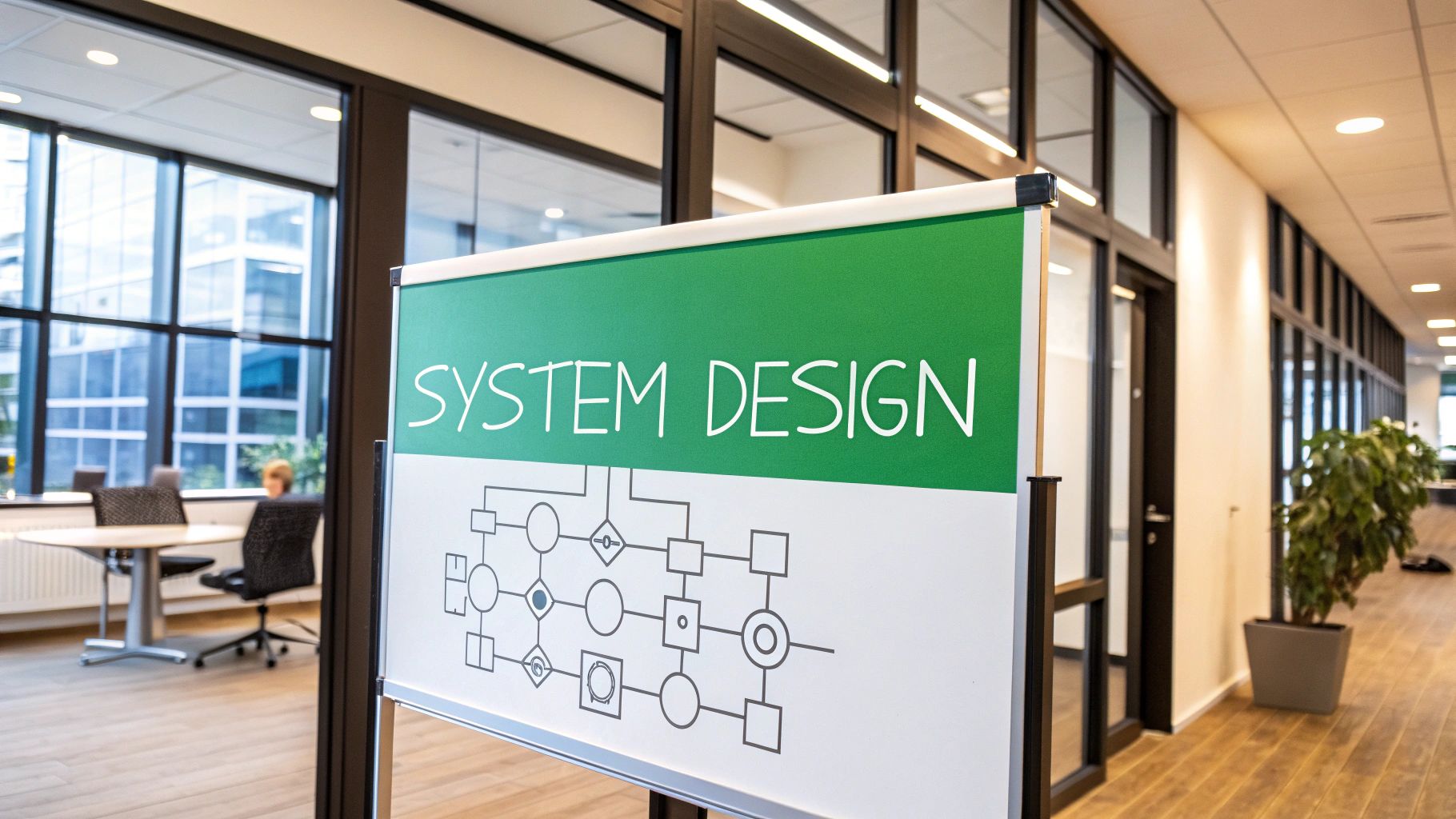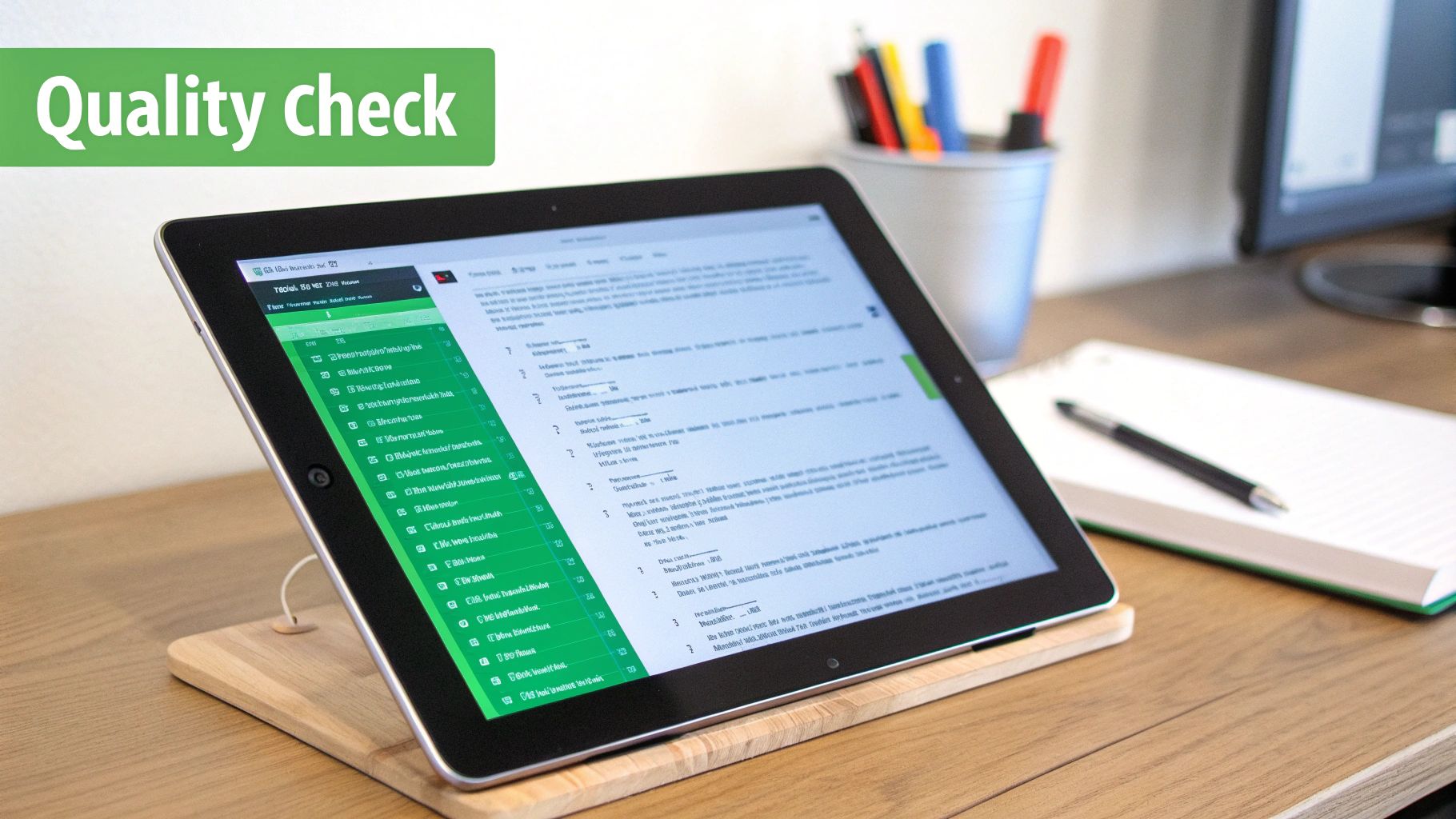Unlock expert strategies for technical requirements documentation. Boost project clarity and success with our concise, actionable guide.

Technical requirements documentation is the cornerstone of successful software projects. It bridges the gap between the project vision and its technical execution. This shared understanding across all stakeholders, from business analysts to developers, is vital for preventing costly misinterpretations and ensuring everyone works towards a common goal. Essentially, it’s the blueprint guiding the entire development process, guaranteeing the final product meets expectations.
Understanding the purpose of technical requirements documentation is the first step. It differs from other project documents like Product Requirements Documents (PRDs) and functional specifications. While interconnected, each serves a distinct purpose. PRDs focus on the “what” – the user needs and business goals. Technical requirements focus on the “how” – the specific technical solutions to fulfill those needs.
Functional specifications bridge the gap, detailing how the system behaves from the user’s perspective. This means technical requirements documentation dives into the technical specifics required for implementation.
Let’s take a mobile banking app as an example. A PRD might state the need for users to view their account balance. The functional specification would then describe how this feature appears and functions within the app. The technical requirements documentation would then specify the technical details: the database queries, security protocols, and API calls required to retrieve and display the balance securely. This detail enables developers to build the feature according to precise guidelines.
Technical requirements documentation is critical in outlining the specific criteria and functionalities a product must possess. It serves as a guide for developers, ensuring alignment with stakeholder expectations. Studies show that projects with well-defined technical requirements significantly reduce development time and costs. Projects with clear documentation saw up to a 30% decrease in development time and a 25% cost reduction compared to those without. Learn more about how to document technical requirements. You might be interested in: How to master technical documentation writing.
Clear and comprehensive technical requirements documentation is vital for several reasons. It minimizes miscommunication and ambiguity, reducing the risk of misunderstandings that can lead to rework and delays. This clarity also allows for accurate project estimations and resource allocation, keeping teams on track and within budget. Well-defined requirements prevent scope creep, ensuring the project remains focused on essential features.
Robust technical requirements documentation offers numerous advantages:

Building truly effective technical requirements documents goes beyond the basics. It’s about creating a document that not only fulfills its purpose but also actively contributes to project success. This involves clear communication, stakeholder alignment, and a detailed breakdown of all essential components.
Every strong requirements document starts with a concise system overview. This section sets the context for the entire document, explaining the system’s purpose, scope, and the problems it addresses. Think of it as an introduction, providing key background information for all stakeholders. For example, if the document outlines requirements for a new project management software, the overview would describe the software’s core functionality and its role in improving team collaboration.
Functional requirements are the heart of any technical requirements document. They define precisely what the system must do. These requirements should be highly granular, detailing each specific action and function. Imagine providing step-by-step instructions – clarity is paramount.
Non-functional requirements are equally critical, focusing on how the system performs. These requirements describe the system’s attributes, impacting its overall quality and user experience.
To help clarify these essential components, let’s look at a detailed breakdown in the following table:
Key Components of Technical Requirements Documentation
This table highlights the key elements of strong requirements documents, emphasizing the importance of clarity and specificity. By avoiding common mistakes and providing concrete examples, teams can ensure everyone is on the same page.
Ambiguity is the enemy of effective requirements. Each requirement should be specific and measurable. Instead of saying “the system should be easy to use,” specify a measurable metric, like “users should be able to complete a key task in under 5 minutes.” This precision facilitates accurate testing and validation. For more insights on improving code documentation, check out How to master code documentation.
While core principles remain consistent, specific requirements vary across industries. A healthcare application might prioritize HIPAA compliance, while a financial application focuses on PCI DSS standards. Tailoring documentation to address industry-specific regulations and best practices is essential. Understanding these nuances leads to effective requirements that ultimately drive project success.

We’ve covered the basics of technical requirements documentation. Now, let’s dive into a practical, five-stage process for creating these crucial documents. This refined process transforms requirements gathering into a predictable, repeatable system, setting the stage for project success.
The first stage is elicitation. This is the process of gathering information from stakeholders. It involves understanding the underlying business needs behind their requests. Effective elicitation techniques, like interviews and workshops, can uncover hidden requirements and ensure everyone is on the same page from the start.
For example, instead of simply accepting a request for a specific software feature, dig deeper. Explore the problem the stakeholder is trying to solve. This approach can often reveal simpler, more efficient solutions.
Once you’ve identified the needs, the next stage is analysis and specification. This is where you translate ambiguous business objectives into precise technical specifications. This stage focuses on the how.
For example, if the need is to improve data processing speed, the technical specification might detail required hardware upgrades and software optimizations. This level of detail is crucial for developers to accurately estimate effort and implement effective solutions.
Most projects have competing requirements. Prioritization helps you determine which requirements are most critical. Techniques like the MoSCoW method (Must have, Should have, Could have, Won’t have) or value-based prioritization help teams make strategic decisions about features for each development phase. Prioritizing ensures the most valuable features are delivered first, maximizing return on investment.
Next, document the prioritized requirements in a clear, concise format. This document becomes the single source of truth for the project. A comprehensive review process, involving all key stakeholders, ensures accuracy and completeness. This validation step is essential for catching errors and ambiguities early, saving time and resources.
Requirements rarely stay the same throughout a project. Change management processes are essential for handling inevitable revisions. A formal process for requesting, evaluating, and approving changes ensures the technical requirements documentation stays up-to-date and aligned with evolving business needs. This controlled approach minimizes disruption and maintains project integrity.
This five-stage process provides a robust framework for creating effective technical requirements documentation. By following these steps, you can ensure your documentation:

Technical requirements documentation is not a one-size-fits-all solution. It must be tailored to each project’s unique characteristics. Much like a tailor adjusts a suit, technical requirements must be customized to fit different technical environments and business objectives.
This customization recognizes the wide range of project types. A web application project, for instance, will have different technical requirements than a mobile app or an enterprise system implementation. Each category presents its own unique challenges, requiring specialized documentation. Understanding the specific nuances of each project is crucial.
To illustrate the varying needs of technical requirements documentation, let’s examine a few project types and their key considerations. This comparison will highlight the importance of adapting documentation to each project’s context.
Before diving into specific project examples, let’s look at a table summarizing the technical documentation requirements across various project types. This table provides a quick overview of the key focus areas and considerations for each type of project.
Here’s a table summarizing these key differences:
This table emphasizes the tailored approach required for each project type. The tools and focus areas shift depending on the project’s specific needs.
Now, let’s delve into some specific project examples to illustrate the tailored approach.
For web applications, responsive design and scalability are paramount. Documentation should address how the application adapts to different screen sizes and user loads. This may involve specifications for various layouts, image optimization, and server capacity planning.
Mobile apps prioritize battery life and performance. Requirements might include specifications for power consumption, memory usage, and data transfer rates. This focus ensures a smooth user experience across devices.
For enterprise systems, integration is critical. Documentation must outline how the system interacts with existing software and databases. Security is also key, requiring specifications for authentication, authorization, and data protection. Technical specification documents are vital for these projects. They can reduce IT project failure rates by 40% and lead to cost savings of up to 20%, as highlighted in this informative article on technical specifications.
Beyond project specifics, industry standards and compliance requirements also shape documentation. For instance, healthcare applications must comply with HIPAA regulations, while financial systems adhere to PCI DSS standards. Addressing these ensures legal compliance and builds user trust.
This section explores the vital tools and templates that can dramatically improve how you create and manage technical requirements documentation. Just as a skilled craftsperson needs the right tools, effective documentation requires the right resources. Let’s look at some key solutions that high-performing teams use.
Requirements management platforms provide centralized hubs for all your project’s requirements. These tools offer features like version control, traceability, and collaboration tools, ensuring everyone stays on the same page.
Document generation tools automate creating technical requirements documents from templates and data sources. This automation saves time and guarantees consistency, eliminating manual formatting and repetitive tasks.